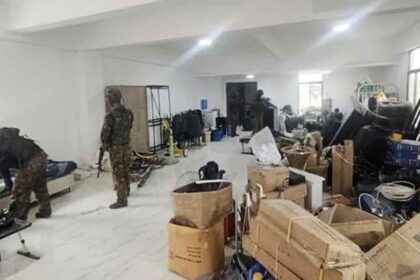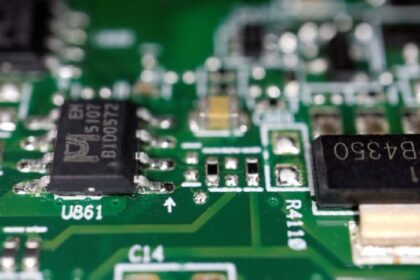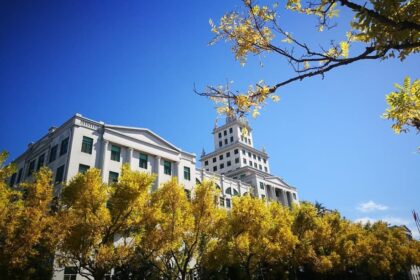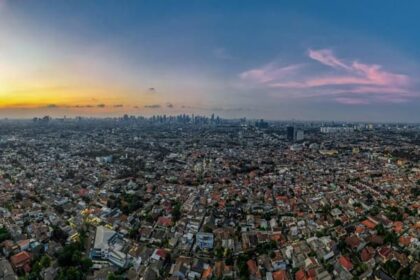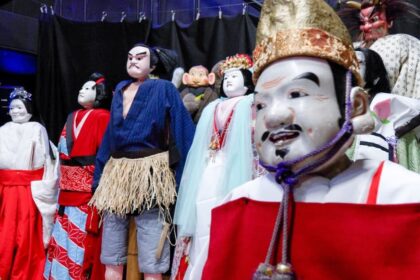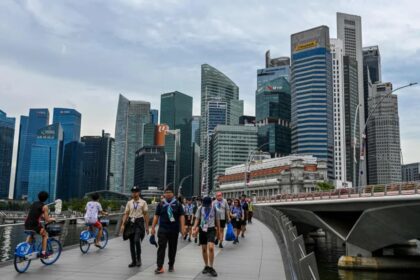A gift that shaped a mission in Tokyo
Seoul has honored entrepreneur and philanthropist Seo Gap ho, a towering figure in the Korean diaspora in Japan, for a decision that helped anchor Koreas diplomatic presence in Tokyo. In 1962, at a moment when official ties between the two countries were not yet normalized, Seo donated land and a building in the Azabu 1 chome district of central Tokyo. That site, now part of Minami Azabu in Minato Ward, is where the Embassy of the Republic of Korea stands today. The donation secured a permanent foothold for Koreas mission in Japan and has served generations of Koreans in Tokyo with consular services, cultural outreach, and public diplomacy.
- A gift that shaped a mission in Tokyo
- Who was Seo Gap ho
- The 1962 donation and what it meant
- Building bridges through education and community
- Investing back home during a difficult era
- Setbacks, resilience, and a lasting honor
- Ties to business leaders and a quiet influence
- How Tokyo remembers him today
- Why this recognition matters now
- Key Points
More than forty years after his death, Seo’s name still carries weight in both countries. The Overseas Koreans Agency selected him as Overseas Korean of the Month for October 2025, elevating a legacy that blends business success with public service. At the embassy in Tokyo, his contributions are remembered through Dongmyeong Hall, a bust in his honor, and an annual Seo Gap ho Day held on November 1 at the embassy grounds. The ambassadors residence, called Dongmyeongjae, also commemorates his pen name. These tributes mark not just a life story, but a pivotal chapter in the formation of a community and a diplomatic mission.
Friends and colleagues often recalled a simple line that guided him. Before he built factories or made donations, he set a personal standard rooted in pride and duty. According to accounts that preserve his memory, Seo liked to explain what drove him to give back and to invest where it mattered most.
“Your homeland should never be a source of shame.”
Who was Seo Gap ho
Seo Gap ho was born to a poor farming family in Ulju, South Gyeongsang Province. As a child he left for Osaka, where he survived on hard work and learned the trade of textile spinning. Early jobs were demanding and often menial, including shifts that stretched long into the night. Over time he mastered spinning techniques, picked up management skills inside factories, and cultivated a reputation for relentless discipline. In 1948 he founded Sakamoto Spinning, which expanded as Japan rebuilt its economy after the war and demand for textiles soared.
By the early 1960s, Sakamoto Spinning had grown into a major player in a sector that powered much of Japans early postwar commerce. Reports from the time credit the company with sales that reached into the billions of yen by 1961. With that performance came a nickname that followed him for the rest of his life, the Textile King of Osaka. He earned it not just for revenue and output, but for a business style that emphasized quality, reinvestment, and training workers to run machinery at scale.
The 1962 donation and what it meant
In 1962 Korea and Japan were still working toward full diplomatic normalization, which would arrive three years later with the Basic Treaty between Korea and Japan (1965). Funding for Koreas mission in Tokyo was tight. The community of Koreans living in Japan frequently filled the gaps with donations. Seo stepped in with an extraordinary gesture. He transferred land and a building in Azabu 1 chome to the Korean government. The gift provided stability at a time when uncertainty could have set the mission adrift. It ensured an address, a presence, and a sense of home for a community that still faced discrimination and exclusion.
The site later became the unified embassy and ambassadors residence in Minami Azabu. The embassy complex was completed in 1979, then rebuilt in 2013 to meet modern standards and to serve as a diplomatic and cultural hub. Inside, divisions handle political and economic affairs, consular services, public relations, education, and defense attaché duties. The complex doubles as a venue for cultural programming and community events, connecting the mission to Koreans in Tokyo and to Japanese visitors curious about Korea.
Commemoration is woven into that space. A hall named for Dongmyeong, Seo’s pen name, hosts exhibitions and ceremonies. A bust keeps his image in the public eye. Each year on November 1, embassy staff and community members mark Seo Gap ho Day, a reminder that the mission’s physical stability in Tokyo began with a private donation.
The head of the Overseas Koreans Agency, Kim Kyung hyup, has framed the honor in terms of national development and the diaspora’s growth in Japan. His agency selects recipients who have strengthened links among Koreans living abroad and between overseas communities and the homeland.
“Chairman Seo Gap ho’s donation and investment played an important role in the development of Korean society in Japan and the Korean economy,” said Kim Kyung hyup, head of the Overseas Koreans Agency. “His dedication deserves to be remembered.”
Recognition aside, the donation’s impact is easy to see today. A permanent site allowed the mission to evolve into a full embassy after normalization. It gave diplomats a secure base, let staff build a cultural center, and created a place where Koreans in Tokyo could access services and celebrate identity. Few private gifts have had as much impact on the daily life of a modern diplomatic mission.
Building bridges through education and community
Seo’s philanthropy began far from the halls of diplomacy. In Osaka, he focused on education for Korean children and on institutions that knit the diaspora together. He served as chairman of Geumgang Academy starting in 1957 and continued to provide operating funds year after year. He personally supported Kongo Gakuen, a Korean school in Osaka, so students could study Korean language and history while growing up in Japan. He also provided steady aid to the Osaka chapter of Mindan, the Korean Residents Union, helping it deliver community services and maintain cultural ties for families spread across the city.
Education was a theme across his life. In 1973 he established Dongmyeong Commercial High School to offer free schooling for workers, pairing studies with practical skills and encouraging cooperation between industry and academia. That approach mirrored how he ran his factories, where training and worker advancement were part of the operating model. It also reflected his belief that secure livelihoods and learning reinforce each other, especially for communities that face barriers to opportunity.
Investing back home during a difficult era
Seo did not limit himself to diaspora causes. He also became a pioneer of overseas Korean investment in the home economy. In 1963 he acquired Taechang Textile in Yeongdeungpo in Seoul and established Pangrim Spinning. At a time when foreign exchange was scarce and industrial capacity was still emerging, bringing in capital and technical know how from abroad was a bold move. It set a precedent for other overseas Koreans who wanted to contribute, and it aligned with Seoul’s push for export led growth in light manufacturing and textiles during the 1960s.
Over the next decade, Seo helped launch additional companies, including Banglim Spinning and Yoonsung Spinning. A plant in Gumi, a rising industrial city, symbolized how new factories were spreading beyond Seoul to regional hubs that offered labor and transportation links. These ventures boosted textile exports and created stable jobs for thousands of young women. For many families, the steady wages from those positions became a ladder to education for younger siblings and to new careers in a fast changing economy.
Seo’s investments bridged two industrial systems. Japanese mills had modern equipment and processes that Korean factories needed in order to compete in global markets. By moving capital and expertise across the water, Seo helped Korean plants upgrade spinning technology, refine quality control, and meet demand from buyers in the United States and Europe. The gains were not just financial. Workforce training elevated skills and prepared a generation of managers and technicians who later moved into more advanced manufacturing.
Setbacks, resilience, and a lasting honor
Fortunes turned in the mid 1970s. A devastating factory fire in 1974 destroyed a new plant in Gumi. The global oil crisis drove up costs across the textile supply chain, which depends on energy at every stage from spinning to finishing. Sakamoto Spinning, his flagship company in Japan, went bankrupt amid those shocks in 1974. Seo tried to rebuild, driven by the same stubborn persistence that had carried him from child laborer to industrialist. Time was against him. He died in 1976 at age 62.
Recognition followed, both in Korea and among the diaspora in Japan. The Korean government presented him with the Order of Civil Merit, the Camellia Medal, honoring a life spent strengthening the nation’s economy and its global footprint. In Tokyo, the embassy’s hall, museum displays, and commemorative day keep the story alive for new generations. The values that guided him, pride in country matched with care for community, are easy to trace in each institution he touched.
Ties to business leaders and a quiet influence
Seo moved in circles that later produced some of Koreas most influential business figures. He became a mentor to Shin Kyuk ho, who went on to build Lotte Group. The two met often in Osaka as Shin pursued food distribution and manufacturing. Accounts from those years describe a steady flow of advice from the seasoned textile magnate to the younger entrepreneur. Seo also formed family ties with Lee Hee gun, a Korean Japanese financier who founded Shinhan Bank. In Osaka, the three men pledged brotherhood, a symbolic bond that reflected both friendship and a shared commitment to building enterprises that served Korean communities in Japan and in Korea.
That informal network mattered. Korean entrepreneurs in Osaka faced barriers in finance, licensing, and social acceptance. Trusted peers provided the backing that formal institutions did not always offer. Knowledge sharing, access to suppliers, and credit were often arranged outside boardrooms. The careers that grew from those ties, including the expansion of retail, finance, and manufacturing, reshaped Korean communities on both sides of the sea.
How Tokyo remembers him today
The embassy that stands on the land he gave has become an active landmark. Staff serve Koreans across the Tokyo metro area with passports, visas, and civil documents. The cultural center hosts exhibits, performances, and lectures that tell Korean stories to Japanese audiences. Dongmyeong Hall brings those threads together with displays about Seo’s life and about the early years of Koreas mission in Tokyo. The ambassadors residence, Dongmyeongjae, signals that the person who secured the embassy a home still has a presence there.
Each year on November 1, the embassy opens its doors for Seo Gap ho Day. The event draws officials, educators, business leaders, and community members. Speakers revisit the history of the 1962 donation and the years when diaspora support kept the mission operating. Students from Korean schools in Japan sometimes perform or present projects that trace the lineage of support from earlier generations to their own classrooms today. The setting itself, a modern complex rooted in a gift from an earlier era, underscores the continuity of service to the public.
Why this recognition matters now
The Overseas Koreans Agency, a government body that supports Koreans abroad and connects them with institutions at home, highlights individuals whose work strengthened communities beyond Korea’s borders. Seo’s selection in October 2025 reflects a broad view of public service that includes building companies, funding schools, and supporting a diplomatic mission before full normalization between Seoul and Tokyo. It also reflects the fact that diaspora philanthropy can create public goods that governments then steward for decades.
Seo’s story offers a clear example of how private action can advance national interests. A businessman gave land and a building. An embassy gained permanence. Korean families in Japan gained a place to get help with documents, celebrate heritage, and connect with officials. Students stayed in touch with their language and history. Workers found skills and wages that lifted households. Those outcomes did not erase the trials he faced in the 1970s, but they have outlived them. The honor from Seoul affirms that the benefits remain visible in classrooms, factories, and in a building in Minami Azabu where a national flag flies.
Key Points
- Seoul named Seo Gap ho Overseas Korean of the Month for October 2025.
- In 1962 he donated land and a building in Azabu 1 chome, now the site of Koreas embassy in Tokyo.
- The embassy commemorates him with Dongmyeong Hall, a bust, and an annual Seo Gap ho Day on November 1.
- Seo rose from poverty in Ulju to found Sakamoto Spinning in 1948 and became known as the Textile King of Osaka.
- He supported Korean education in Osaka, chaired Geumgang Academy, funded Kongo Gakuen, and aided the Osaka Mindan.
- He invested in Korea by acquiring Taechang Textile and launching Pangrim Spinning, later helping start Banglim and Yoonsung Spinning.
- A 1974 factory fire and the global oil crisis pushed his companies into bankruptcy; he died in 1976 at age 62.
- He received national honors, including the Order of Civil Merit, Camellia Medal, and remains honored at the Tokyo embassy.





